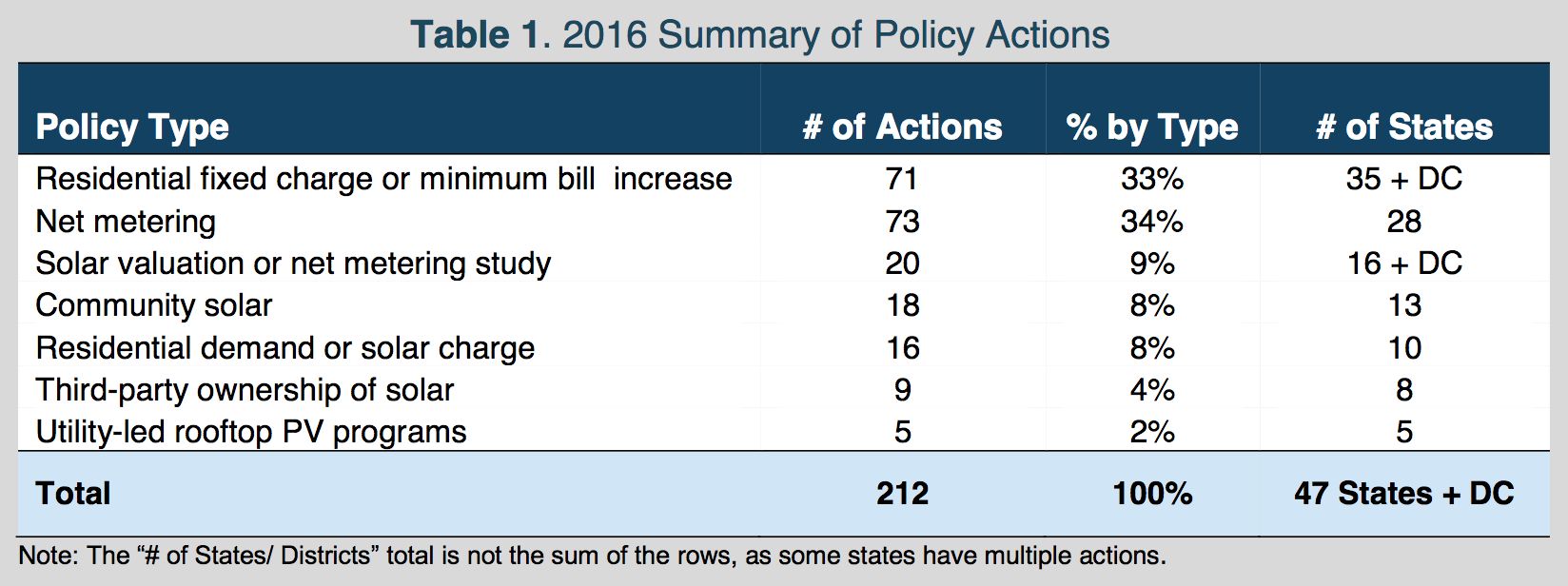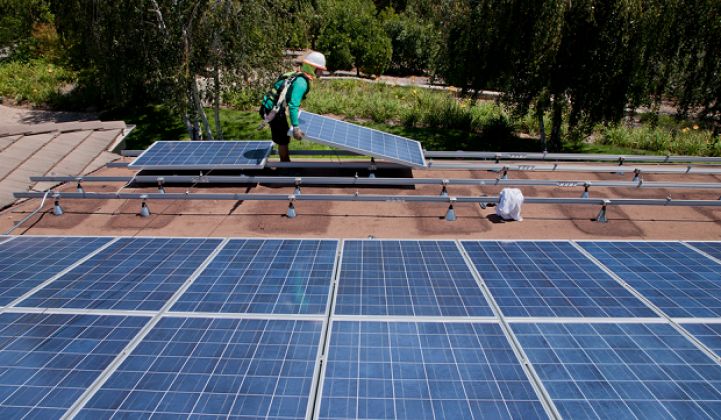While solar policy debates have already been raging for several years, the discussion is far from over.
Nearly every single U.S. state took some type of policy action related to distributed solar in 2016, according to the NC Clean Energy Technology Center's (NCCETC) year-end edition of The 50 States of Solar. A total of 212 solar policy actions were taken by states and utilities across the country, which represents 37 more actions than in 2015. These developments occurred in 47 states plus Washington, D.C.
The most common change was related to net energy metering, a policy that compensates distributed solar customers for the excess energy they export back to the grid -- a policy that utilities say is costly and unfair. There were 73 actions on net metering in 28 states last year, up from 42 actions in 27 states the year before, according to the report. Arizona and Nevada were home to some of the most high-profile net metering debates.
Not all states that acted on net metering chose to do away with the policy, but many states are considering alternatives. To that end, there were 20 actions in 16 states plus D.C. pertaining to the valuation of distributed energy last year. That number is actually lower than in 2015, because the number of specific net metering changes increased. New York saw a major development on this front, with the long-awaited release of the New York Department of Public Service staff report on the value of distributed energy.
Residential fixed charge and minimum bill increases were another common policy move in 2016, with 71 actions in 35 states plus D.C. In many cases, regulators scaled back utility proposals. In Colorado, for instance, stakeholders reached a settlement where Xcel withdrew its proposed grid access fee and agreed to implement time-of-use rates on a trial basis instead.
Connecticut went the other direction and actually reduced residential fixed fees. In a recent decision, the Public Utilities Regulatory Authority lowered customers' monthly service charge from $17.25 to $9.64.
Community solar also received a significant amount of attention from policymakers with 20 actions in 13 states, an increase over the previous year. This comes as no surprise given the opportunity community solar represents for both utilities and solar companies. Pacific Gas & Electric, for instance, launched a community solar program early in the year and Maryland finalized the state's community solar rules.

Several utilities introduced proposals related to residential demand charges in 2016, which amounted to 16 actions in 10 states. These utilities view demand charges as a way to manage peak load and recoup investments in the grid system. However, policymakers have been hesitant to approve the rate change. In Illinois, lawmakers rejected universal residential demand charges proposed by Commonwealth Edison in Illinois last year. In Arizona, regulators rejected UniSource Energy Services’ request to impose demand charges on all residential solar customers.
One of the most high-profile demand charge proposals has yet to be decided. Last June, Arizona Public Service, the largest investor-owned utility in the state, filed a proposal for universal demand charges as part of its general rate case. Arizona is currently one of the country's most vibrant rooftop solar markets, but distributed solar advocates say that could end if regulators approve residential demand charges, which erode customers' monthly savings.
Actions on utility-led solar programs and third-party-owned solar were less common than other developments last year, but they were still meaningful. A proposal to allow for third-party ownership in Florida failed, but solar advocates successfully defeated a counter-proposal to put restrictions on the state's solar industry.
Dozens more state policy actions took place in 2016 across all policy categories (many of which we chronicled for GTM Squared). Despite the uncertainty, the residential solar sector saw another year of record growth. This year, while a number of policy changes are already in the works, that trend is expected to continue.
“2016 was very busy year for policymakers and those of us tasked with staying on top of their activity,” said Brian Lips, energy policy project coordinator at NCCETC. “With several state solar markets hanging in the balance, 2017 is looking like it will be another exciting year.”



